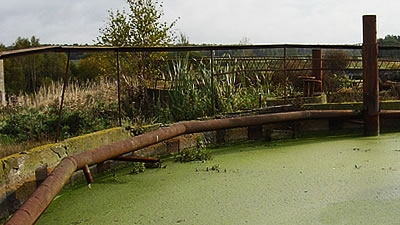![]()
Most people cringe to think about what happens after a toilet flushes. Yes, it is messy business, but the truth is - it matters.
Ask yourself – what happens to all that waste water once it swirls out of sight? Just because you don’t see it, doesn’t mean it has disappeared.
On Nov. 19, 2012 -- World Toilet Day -- the spotlight is on stripping away the reluctance to talk about toilets and global sanitation issues. In Belarus, the focus is on what happens after the toilet is flushed.
Waste water from sewage lines usually ends up at waste water treatment plants that are on the outskirts of crowded cities and towns – and away from the public eye. But these treatment plants play a key role in treating and discharging treated waste water in a safe, sanitary and environmentally friendly manner, so maintaining them in good working condition is essential. This includes not overloading them and ensuring that the treated waste water does not carry excess contaminants.
Take the waste water treatment plant in the town of Gorodok, for example. Located in the northern part of Belarus, this town of 12,000 inhabitants is dotted with lakes and small rivers, with no large industrial presence. The treatment plant, which has been in operation since the 1980s, discharges the treated waste water through canals into the Gorozhanka river. In turn, Gorozhanka connected to the system of lakes and rivers that eventually led to the Baltic Sea.
One of the biggest issues with this waste water treatment plant, that a World Bank's Water Supply and Sanitation Project is now helping to tackle, is the high levels of nutrients (phosphorous and nitrogen compounds) found in the treated waste water. Why?
When such nutrients find their way into a big body of water, like a pond or a lake, they cause algae to bloom, which slowly leech oxygen from the water and affect the aquatic ecosystem in the pond or lake, and turn it into a swamp eventually. This, naturally, is not a desirable environmental or aesthetic outcome.
Working with Belarusian authorities, the project has managed to significantly reduce the amount of these nutrients in the discharged water, thereby improving its quality and reducing any adverse environmental impact. US$ 12 million have been invested in overhauling six such plants over several years, the last of which is expected to be done around mid-2014.
So the next time you hear a toilet flush, think about an algae-free pond on a drive outside town.

